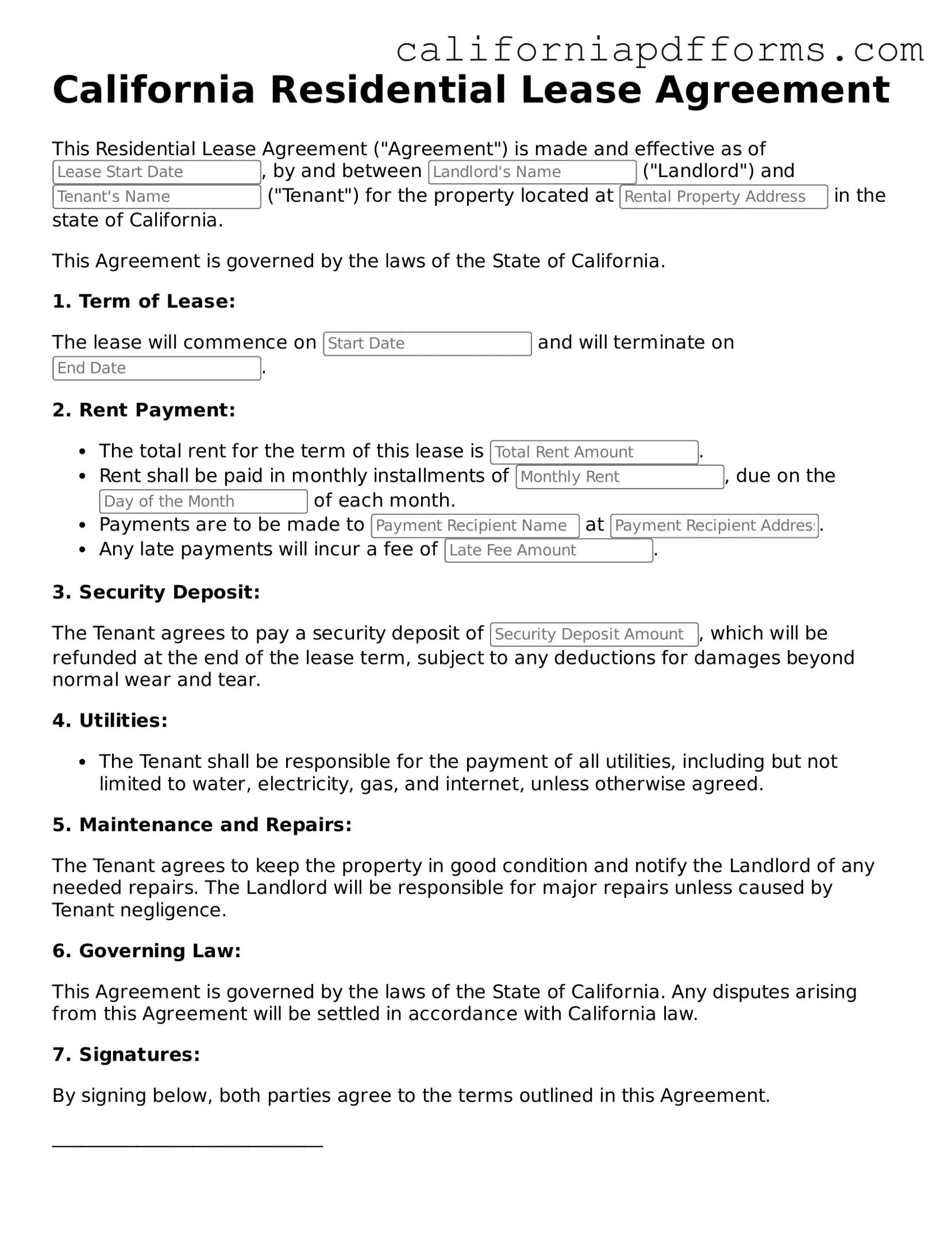What is a California Residential Lease Agreement?
A California Residential Lease Agreement is a legal document that outlines the terms and conditions between a landlord and a tenant for renting a residential property. It specifies important details such as the rental amount, duration of the lease, and responsibilities of both parties.
What are the key components of a Residential Lease Agreement?
Key components typically include:
-
Parties Involved:
Names and contact information of the landlord and tenant.
-
Property Description:
Address and details of the rental property.
-
Lease Term:
Start and end dates of the lease.
-
Rent Payment:
Amount due, payment methods, and due dates.
-
Security Deposit:
Amount required and conditions for its return.
-
Maintenance Responsibilities:
Duties of both the landlord and tenant regarding property upkeep.
-
Rules and Regulations:
Any specific rules that tenants must follow.
How long is a typical lease term in California?
In California, lease terms can vary widely. They can be as short as one month or as long as several years. Common terms include 6-month and 12-month leases. It’s essential to choose a term that meets your needs and those of your landlord.
Can a landlord increase rent during a lease?
Generally, a landlord cannot raise the rent until the lease term ends. However, if the lease is month-to-month, the landlord can increase the rent with proper notice. In California, this notice must be at least 30 days for increases under 10% and 90 days for increases of 10% or more.
What happens if a tenant wants to break the lease early?
If a tenant needs to break the lease early, they may face penalties, including losing their security deposit. It’s important to review the lease agreement for specific terms regarding early termination. In some cases, tenants can negotiate with the landlord or find a replacement tenant.
Are there specific rules for security deposits in California?
Yes, California law limits security deposits to two months' rent for unfurnished properties and three months' rent for furnished ones. The landlord must return the deposit within 21 days after the tenant moves out, minus any deductions for damages or unpaid rent.
What are the tenant's rights regarding repairs and maintenance?
Tenants have the right to a habitable living environment. This means the property must be safe and well-maintained. If repairs are needed, tenants should notify the landlord in writing. If the landlord fails to make necessary repairs, tenants may have the right to withhold rent or take other actions.
Can a landlord evict a tenant without cause?
In California, a landlord cannot evict a tenant without cause if the lease is for a fixed term. For month-to-month leases, a landlord can evict a tenant with proper notice, but they must still comply with local laws regarding just cause eviction.
Where can I find a California Residential Lease Agreement template?
Templates for a California Residential Lease Agreement can be found online through various legal websites, real estate agencies, or local housing authorities. It’s advisable to review any template carefully and consider consulting a legal expert to ensure it meets all legal requirements.
